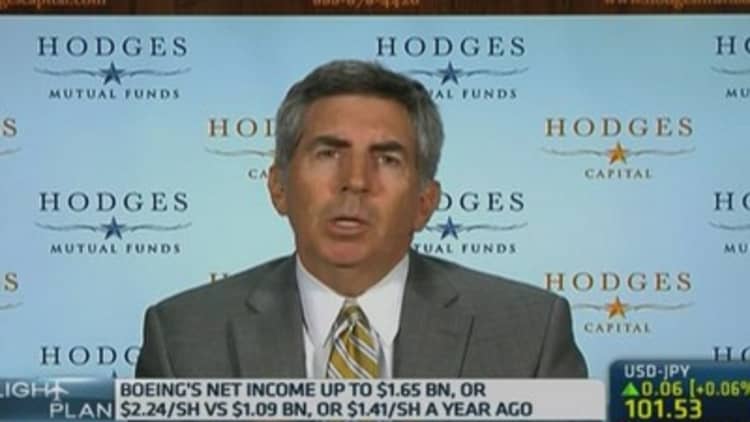The F-35 Joint Strike Fighter is the most expensive, and possibly the most error ridden, project in the history of the United States military. But DOD has sunk so much money into the F-35 — which is expected to cost $1.5 trillion over the 55-year life of the program — that the Pentagon deemed it "too big to fail" in 2010.
Now, the Air Force has taken steps to make sure that the unmitigated disaster that the F-35 has become does not happen again.
The Air Force, in its 20-year strategic forecast entitled "America's Air Force: A Call to the Future," has called for an end to big-ticket programs like the F-35. Instead, it plans to invest in what DOD officials have called more "agile" weapons that can be adapted for multiple uses.
More from The Fiscal Times:
Short-term highway bill sets stage for congressional collision
Govt spends $15 Billion to train incompetent doctors
House Republicans vote to sue Obama over health care law
The report paints a future of the Air Force that resembles an innovative 21st Century company as opposed to a traditional fighting force. The document says that it's now impossible for the United States to build a strategy advantage with large, expensive programs that take years — in the case of the F-35, 14 years and counting to complete.
"We believe rapid change is the new norm and has serious implications for the Air Force," the document states. "The pace at which disruptive technologies may appear and proliferate will result in operational advantages that are increasingly short-lived. Dynamic and increasingly frequent shifts in the geopolitical power balance will have significant implications for basing, posture, and partner capabilities that may favor flexibility over footprint."
The F-35 isn't mentioned by name in the forecast, but the program's greasy fingerprints are all over it. The Air Force is apparently concerned that it is pricing itself out of the weapons market because it is spending so much time and money on large programs.
"Agility is the counterweight to the uncertainty of the future and its associated rapid rate of change. We learned from sequestration that our brittle system often leads to suboptimal decisions that are difficult to reverse," the document reads. "Huge, long-term programs limit our options; we are too often left with 'all or nothing' outcomes and 'double or nothing' budget decisions."
"Large, complex programs with industrial-era development cycles measured in decades may become obsolete before they reach full-rate production," the authors added. "The system is cumbersome, as the cost and complexity of these large programs draw additional layers of oversight and scrutiny."
Read More Fleet of military tanks up for auction
The strategy shift is also a recognition of the shrinking budget environment at DOD, which is expected to lose $600 billion over the next decade. According to the Center for Strategic and Budgetary Assessments, the change is also a reflection of compensation for members of the Air Force rising dramatically over the last 16 years.
More than anything, the shift in strategy is an indictment of the way that the Air Force and the rest of DOD have been doing business for years. The F-35 has come to symbolize all that's wrong with American defense spending: uncontrolled bloat, unaccountable manufacturers (in this case, Lockheed Martin), and an internal Pentagon culture that cannot adequately track taxpayer dollars.

It's no small irony that on the same day the change in Air Force strategy was revealed, Winslow Wheeler, a staff member at the Project On Government Oversight and a long-time critic of the F-35 program, reported that American taxpayers will pay between will pay between $148 million and $337 million per jet in 2015, depending on the model.
"A single Air Force F-35A costs a whopping $148 million. One Marine Corps F-35B costs an unbelievable $251 million. A lone Navy F-35C costs a mind-boggling $337 million. Average the three models together, and a 'generic' F-35 costs $178 million," Wheeler wrote.
"It gets worse. These are just the production costs. Additional expenses for research, development, test and evaluation are not included," he added.
Of course, this price tag is up dramatically from 2014.
"The cost of an F-35B grew from $232 million in 2014 to a bulging $251 million by 2015," Wheeler wrote. "The cost of the Navy's F35C grew from $273 million in 2014 to a wallet-busting $337 million by 2015."
—By David Francis, The Fiscal Times

